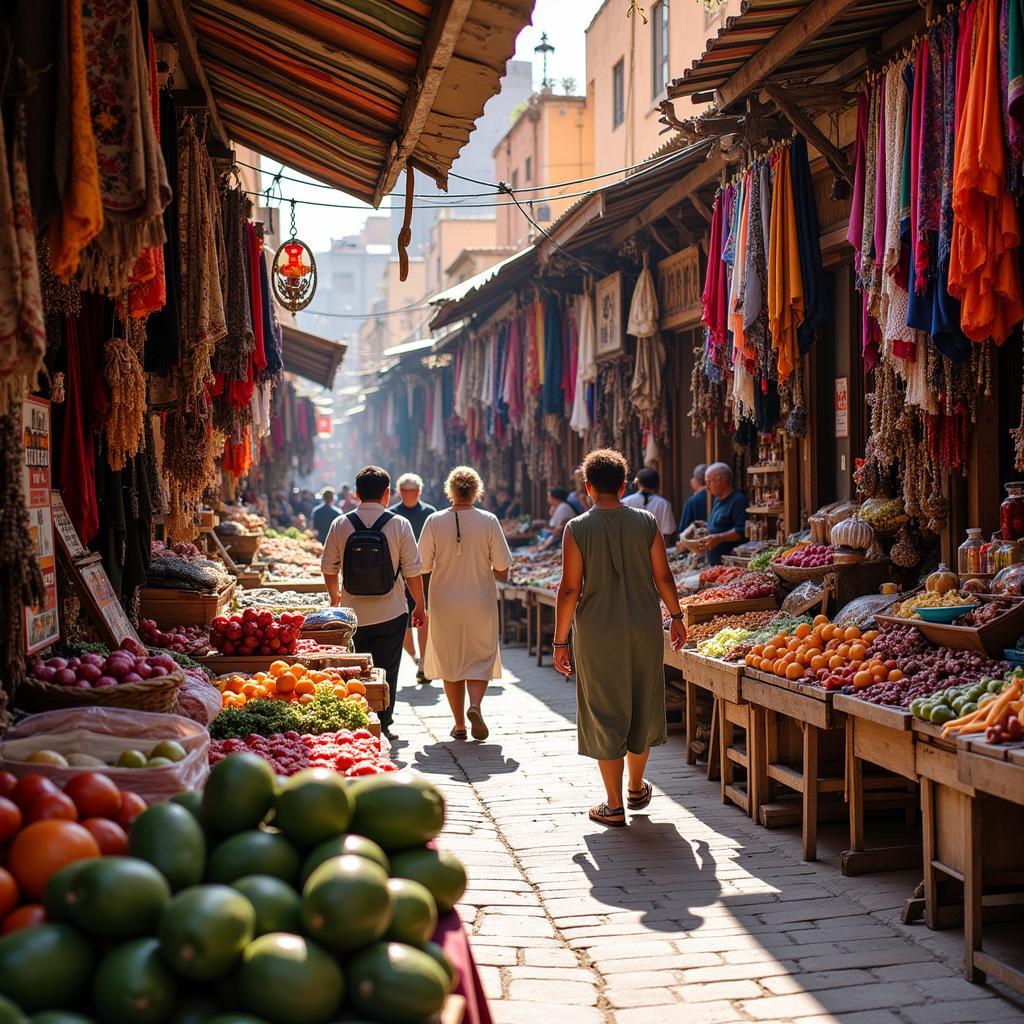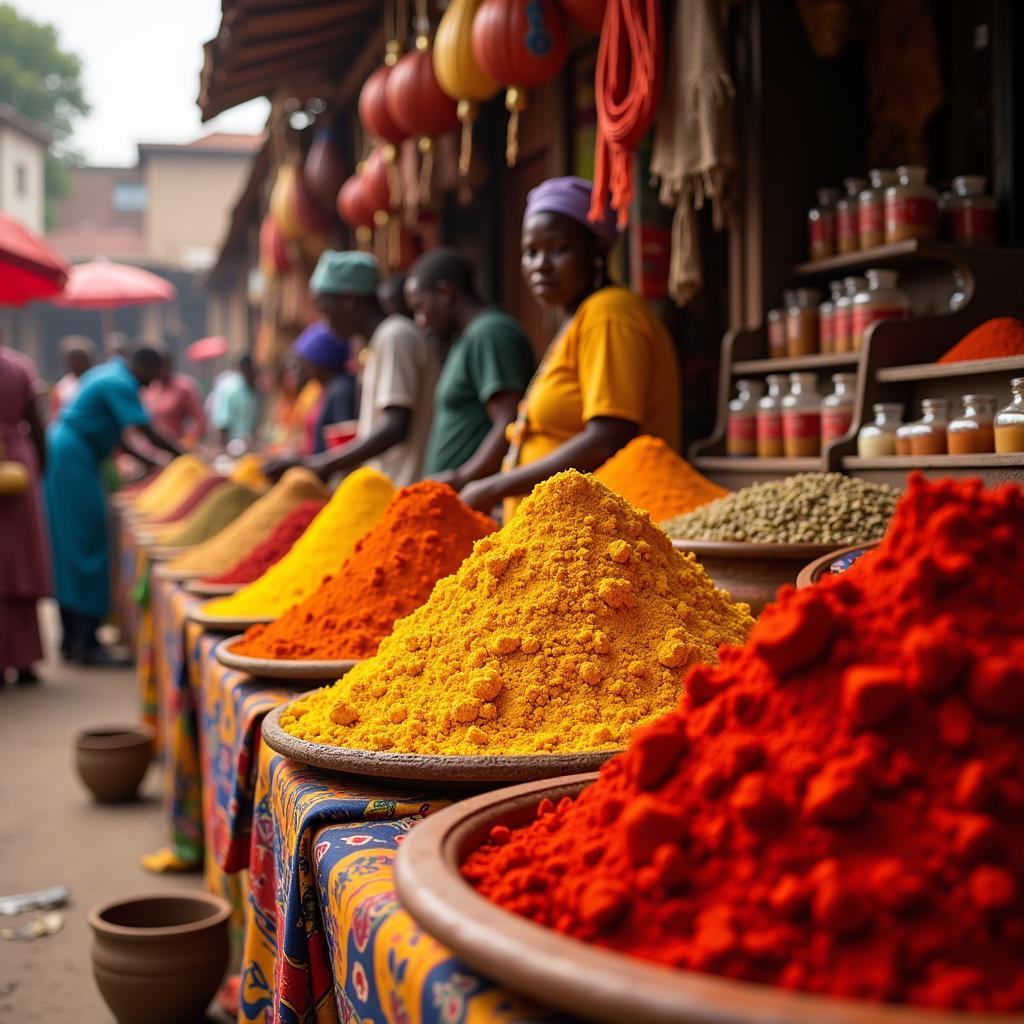African Food Chain Examples: Exploring the Interconnectedness of Life
Africa is renowned for its diverse ecosystems and incredible wildlife, and understanding the intricate web of life that connects all these elements is essential. The African food chain, a complex network of relationships between organisms where one organism consumes another for sustenance, is a fascinating example of how these ecosystems thrive.
This article dives deep into the captivating world of the African food chain, exploring diverse examples and highlighting the essential roles each species plays.
Unveiling the Levels of the Food Chain
The African food chain, like any other, is characterized by trophic levels, where each level represents a specific feeding role.
1. Producers: The Foundation of Life
At the bottom of the food chain, we have the producers, often referred to as autotrophs. These are organisms capable of producing their own food through photosynthesis.
“Producers are the foundation of any ecosystem. Without them, life as we know it would simply not exist.” – Dr. Amani Kibwana, Ecologist
Examples of producers in the African food chain include:
- Grasses: The vast savannas of Africa are home to a variety of grasses that serve as vital food sources for numerous herbivores.
- Trees: From the towering baobab trees to the acacia trees dotting the savanna, these provide leaves, fruits, and seeds for a wide range of animals.
- Phytoplankton: These microscopic organisms form the base of aquatic food chains in Africa’s lakes and oceans.
2. Consumers: Feeding on the Producers
Consumers, or heterotrophs, obtain their energy by consuming other organisms. These can be categorized into different groups based on their diet.
a) Herbivores: The Plant Eaters
Herbivores, like the iconic zebras, wildebeest, and giraffes, solely rely on plants for their sustenance.
“Herbivores play a crucial role in regulating plant populations and ensuring the health of African ecosystems.” – Dr. Samuel Osei-Tutu, Wildlife Biologist
Examples of African herbivores:
- Elephants: The largest land mammals in Africa, elephants consume vast amounts of vegetation.
- Antelopes: From the graceful gazelle to the majestic kudu, antelopes are diverse herbivores, each adapted to specific habitats.
- Insects: Termites, grasshoppers, and caterpillars play vital roles in consuming grasses and leaves.
b) Carnivores: The Meat Eaters
Carnivores, such as lions, leopards, and cheetahs, are apex predators that hunt and kill other animals for food.
“Carnivores help to maintain a balance in the ecosystem by controlling herbivore populations.” – Dr. Fatima Mahmoud, Mammalogist
Examples of African carnivores:
- Lions: Known as the “King of the Jungle,” lions are social predators that work together to bring down large prey.
- Hyenas: These scavengers are highly adaptable and often compete with lions for food.
- Crocodiles: Powerful reptiles lurking in rivers and lakes, crocodiles are ambush predators that can take down large prey.
c) Omnivores: The Balanced Diet
Omnivores are organisms that consume both plants and animals.
“Omnivores are adaptable and can thrive in various environments due to their diverse diet.” – Dr. Abena Boadu, Zoologist
Examples of African omnivores:
- Baboons: These intelligent primates are known for their opportunistic feeding habits, consuming fruits, insects, and even small animals.
- Warthogs: These pig-like animals are omnivores, feeding on roots, tubers, and insects.
- Humans: As part of the African ecosystem, humans are omnivores, with their diet often incorporating both plant and animal sources.
3. Decomposers: The Recycling Force
Decomposers, such as bacteria and fungi, play a crucial role in breaking down dead organisms and waste products.
“Decomposers are the unsung heroes of the ecosystem, recycling nutrients and returning them to the soil.” – Dr. Hassan Ahmed, Microbiologist
Examples of decomposers in the African food chain:
- Bacteria: These microscopic organisms are essential for breaking down dead plants and animals into simpler compounds.
- Fungi: Fungi, like mushrooms, play a vital role in decomposing dead wood and fallen leaves.
The Interconnectedness of Life: A Balancing Act
The African food chain is a complex web of relationships, where each organism plays a vital role in maintaining the balance of the ecosystem.
- Predator-Prey Dynamics: The predator-prey relationship, where predators hunt and kill prey, is a crucial force in regulating populations and ensuring the health of ecosystems.
- Competition: Organisms compete for resources, such as food, water, and shelter. This competition helps to maintain a balance and prevents any one species from dominating the ecosystem.
- Symbiosis: Symbiosis is a relationship between two different species where both organisms benefit. Examples include the symbiotic relationship between ants and aphids.
African Food Chain Examples: Specific Cases
Let’s delve into specific examples of the African food chain, showcasing the incredible diversity and interconnectedness of life on the continent.
1. The Savanna Food Chain
The savanna, a vast grassland ecosystem, is home to numerous species, each playing a specific role in the food chain.
- Producers: Grasses, trees, and shrubs provide the foundation for the savanna food chain.
- Herbivores: Wildebeest, zebras, gazelles, and elephants graze on the abundant vegetation.
- Carnivores: Lions, leopards, cheetahs, and hyenas prey on herbivores, while birds of prey like vultures scavenge on carcasses.
2. The Rainforest Food Chain
The dense rainforests of Central and West Africa boast incredible biodiversity, creating a complex food chain.
- Producers: Lush vegetation, including trees, vines, and shrubs, form the base of the rainforest food chain.
- Herbivores: Gorillas, monkeys, and insects consume the abundant plant life.
- Carnivores: Leopards, pythons, and various birds of prey hunt herbivores and other smaller animals.
3. The Aquatic Food Chain
Africa’s lakes and oceans are teeming with life, showcasing another fascinating example of the food chain.
- Producers: Phytoplankton form the base of the aquatic food chain, providing food for countless organisms.
- Herbivores: Fish, shrimp, and other invertebrates feed on phytoplankton.
- Carnivores: Larger fish, sharks, dolphins, and other marine predators hunt smaller fish and invertebrates.
Conclusion: Preserving the Balance
The African food chain is a testament to the intricate web of life that exists on our planet. Understanding the interconnectedness of these relationships is crucial for preserving the delicate balance of these ecosystems. Human activities, such as habitat loss, pollution, and climate change, can disrupt the food chain and have devastating consequences for biodiversity.
By learning about the African food chain, we gain a deeper appreciation for the beauty and complexity of nature. We also become more aware of the importance of protecting these ecosystems for future generations.
FAQ
1. What is the role of humans in the African food chain?
Humans are omnivores and play a role in both consuming and impacting the African food chain.
2. How does climate change affect the African food chain?
Climate change can disrupt the delicate balance of the African food chain by altering rainfall patterns, vegetation growth, and animal migration routes.
3. How can we contribute to the conservation of the African food chain?
Supporting conservation efforts, reducing pollution, and promoting sustainable practices are essential for protecting the African food chain.
4. What are some of the challenges facing the African food chain?
Habitat loss, poaching, and illegal wildlife trade are significant threats to the African food chain.
5. What are some resources for learning more about the African food chain?
There are many books, documentaries, and websites dedicated to exploring the fascinating world of the African food chain.

